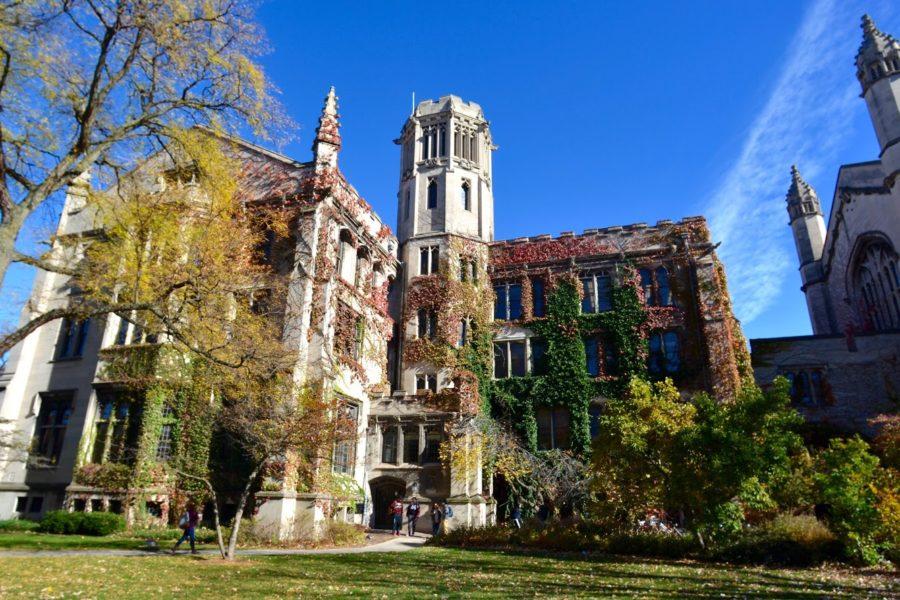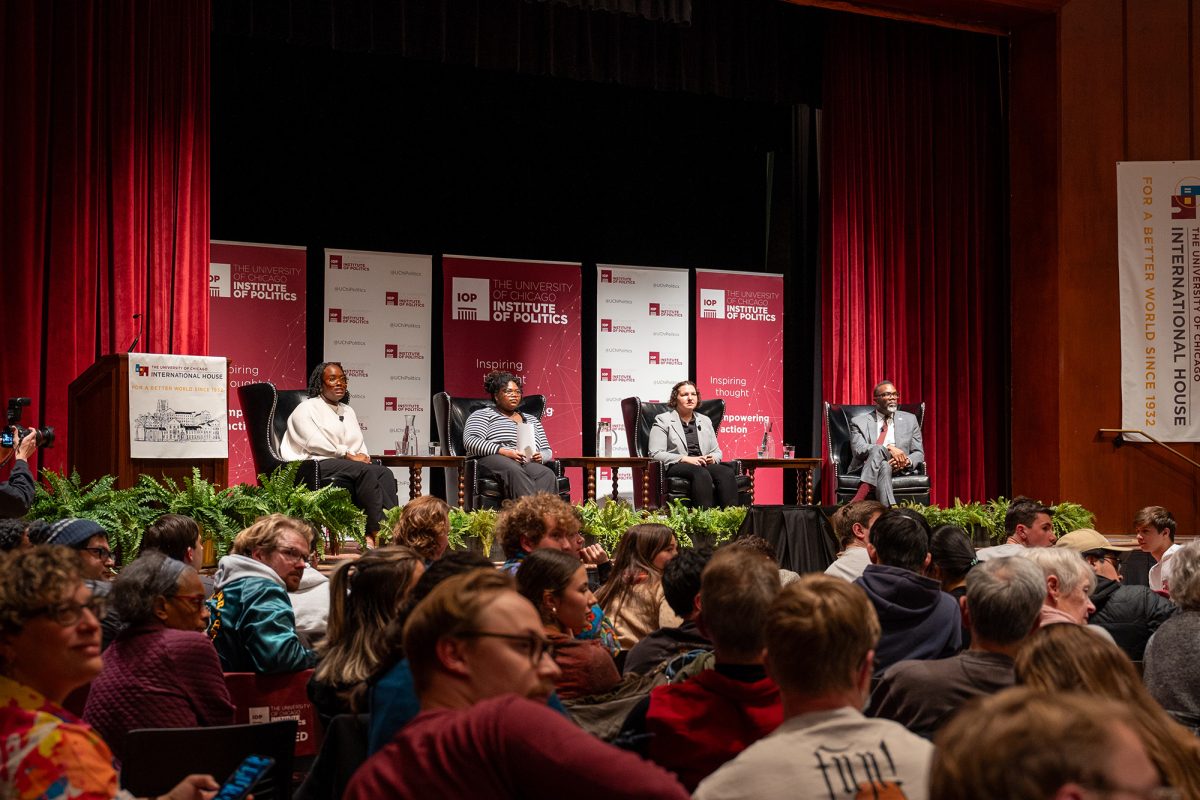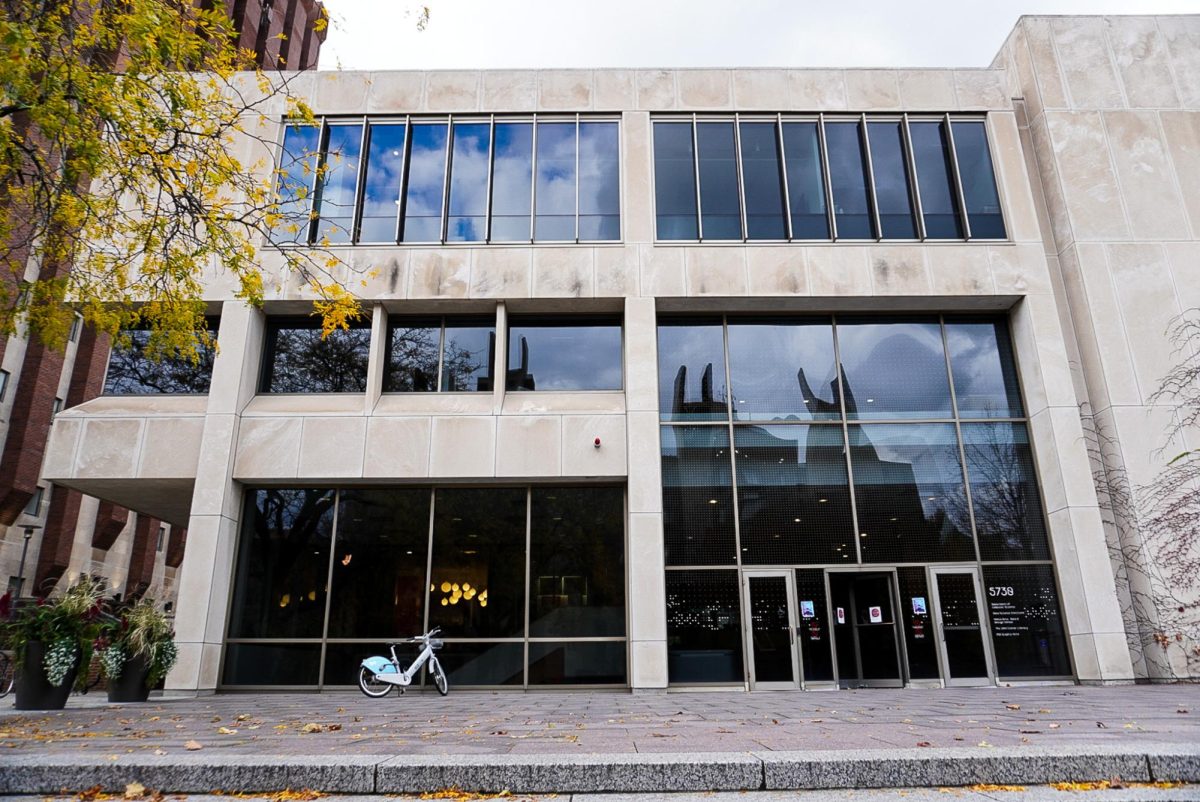Across from Henry Moore’s Nuclear Energy, the statue that commemorates the first splitting of the atom, stands the newest element of the University of Chicago’s science campu—the William Eckhardt Research Center (WERC). In a ceremony on October 29, the University opened the doors to the state-of-the-art research hub and honored the building’s dedication to William Eckhardt, S.M. ’70, (not to be confused with Bernard Eckhart for whom Eckhart Hall is named) in recognition of his $20 million donation to advance scientific research.
Although the University expected to spend $215 million constructing the new research center, the official total project cost settled at $225 million.
WERC will house the Kavli Institute of Cosmological Physics, the entirety of the Astronomy and Astrophysics Department, the Enrico Fermi Institute, the dean of the Division of the Physical Science’s office, and the Institute of Molecular Engineering (IME).
“With its state of the art laboratories (including the Pritzker Nanofabrication Facility) [an offshoot facility of the IME], interaction spaces and unique combination of scientists, we think the WERC will enable big discoveries in cosmology, astronomy and nanoscience,” professor Michael Turner, current director of the Kavli Institute of Cosmological Physics (KICP), wrote in an e-mail.
Turner further discussed the discoveries he hopes will be made at the center.
“Specifically for the KICP, our ‘modest’ to-do list includes identifying the nature of the dark matter that holds the Universe together, understanding the mysterious dark energy that is causing the expansion of the Universe to speed up and to test our most promising theory about how the Universe began—cosmic inflation. And of course, along the way there will be new puzzles and surprises—that is, the nature of discovery in science,” Turner wrote.
Professor Matthew Tirrell, dean and founding Pritzker director of the IME, also expressed excitement for the new research center in remarks delivered at the ceremony.
“The Institute for Molecular Engineering now has a home that matches our vision and aspirations. Our vision is a new form of engineering research and education that emphasizes problem solving with integration and convergence among traditional engineering disciplines and toolsets,” Tirrell said.
The WERC was designed by an architecture, design, planning, and engineering firm called HOK. Additional design consultation was provided by James Carpenter Design Associates (JCDA), which previously worked on the “light bridges,” the light installments and railings along the Midway Plaisance. In a project report, JCDA described the architectural style and significance of the center’s design.
“JCDA’s design concentrates light within the building’s thresholds as a metaphor for the creativity, discovery, and exchange of ideas inside. JCDA’s approach leverages shadow and reflection to emphasize the depth and sculptural qualities of the façade. Taking into consideration the campus and urban surroundings on either side of the new center, the design integrates seamlessly into the landscape, while maintaining a distinct presence,” according to JCDA’s report.
“If history is any guide,” Turner wrote, “not only will discoveries that change the course of science be made in this building but also students trained in the ERC will go on to make game changing advances elsewhere. At Chicago, ideas matter.”







